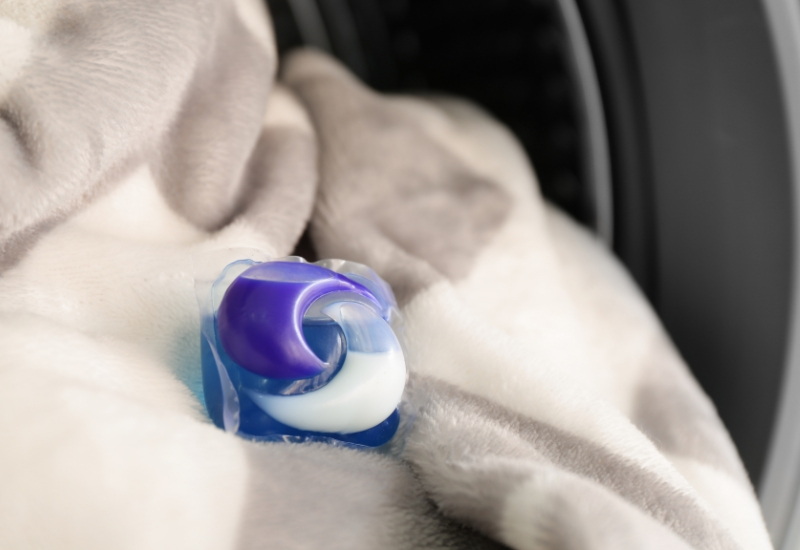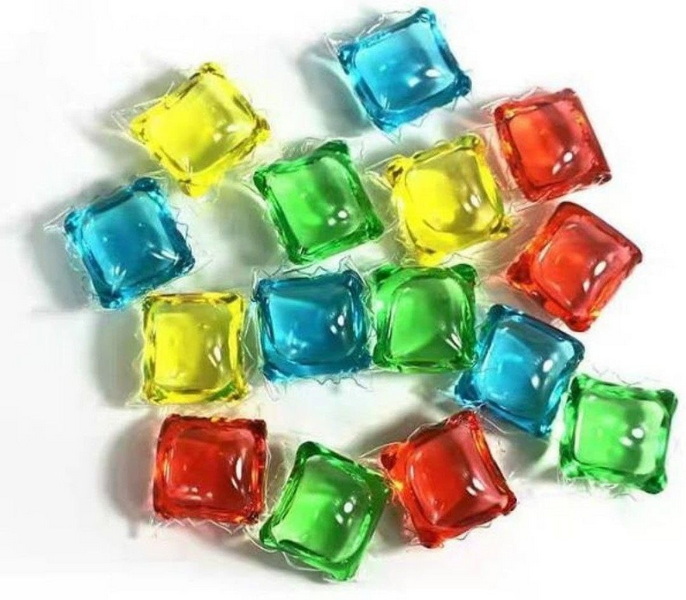Dongguan UFine Daily Chemical Co.,Ltd.
- All
- Product Name
- Product Keyword
- Product Model
- Product Summary
- Product Description
- Multi Field Search
Views: 222 Author: Tomorrow Publish Time: 10-31-2025 Origin: Site











Content Menu
● Section 1: Understanding The Risks
● Section 2: Safer Handling Practices
● Section 3: Safer Storage And Packaging
● Section 4: Child and Pet Safety Programs
● Section 5: Safer Alternatives And Practices
● Section 6: Responsible Disposal And Environmental Considerations
● Section 7: Emergency Response For Pod Exposure
● Section 8: Community And Policy Considerations
● Section 9: Practical Household Tips
● Section 10: Product Design And Manufacturer Responsibility
● Section 11: Cleaning Efficacy Versus Safety Trade-offs
● Section 12: Cultural And Market Variations
● Section 13: Research Gaps And Future Directions
● FAQ
>> Q1. Are laundry detergent pods safer than liquid detergents?
>> Q2. What should I do if a child swallows a pod?
>> Q3. How can I store pods to maximize safety?
>> Q4. Can I use pods if I have pets?
>> Q5. Are there safer alternatives to pods?
Laundry detergent pods have become a popular choice for households seeking convenient, pre-measured cleaning power. However, their compact packaging and concentrated formulas can pose safety risks, especially for children and pets. This article explains practical, evidence-based steps you can take to make laundry detergent pods safer in everyday use, storage, and disposal, while preserving their cleaning effectiveness.

Laundry pods contain highly concentrated detergents, surfactants, enzymes, and scented additives. The small, glossy capsule design can be tempting for young children who may mistake pods for candy. Accidental ingestion or contact with eyes can cause irritation, chemical burns, or more serious health issues. Pets are also at risk if they chew or puncture pods. Causes of incidents often include:
- Accidental ingestion by toddlers or curious pets.
- Pod rupture due to squeezing, chewing, or improper handling.
- Exposure to skin or eyes from mishandling or improper storage.
- Misuse in households with young children or visitors unfamiliar with pod safety.
Best practices for households using laundry pods focus on prevention, immediate response, and minimizing exposure.
- Read and follow label instructions on the product packaging.
- Use the recommended amount for each load; avoid splitting pods or using more than directed.
- Keep pods in their original sealed packaging until use to prevent accidental exposure.
- Wear gloves if you have sensitive skin or are handling multiple pods for a long period.
- Keep containers and pods out of reach of children and pets; consider a high, locked cabinet or a dedicated detergent caddy with a child-resistant latch.
- Do not place pods in areas accessible to children, such as low drawers, low shelves, or near washing machines where kids may see them.
- Do not crush, cut, or puncture pods; avoid attempting to dissolve them in water outside of the washing machine.
- Use a separate measuring device or the pod's design to ensure you do not handle pods more than necessary.
- Clean up spills immediately using gloves and dispose of the residue in a sealed bag to prevent residual exposure.
- Do not mix different household chemicals with detergent pods to avoid potentially hazardous reactions.
- Ensure the laundry room is well-ventilated to minimize inhalation of any fumes, especially during pour or dissolution.
Storage decisions are crucial for reducing pod-related incidents, particularly in homes with children.
- Store pods in their original containers with child-resistant closures whenever possible.
- Place containers on high surfaces, away from children's reach, preferably in a locked cabinet.
- Avoid transferring pods to unlabeled containers or small bottles that children can open easily.
- Consider using a secondary lock or latch on the storage area for added protection.
- Do not store pods near other cleaners or chemicals that could cause confusion or chemical interactions.
- Keep the product away from heat, moisture, and direct sunlight, which can degrade packaging and contents.
- Periodically check for damaged packaging; replace immediately if a capsule shows signs of leakage or damage.
- Teach all household members about pod safety, emphasizing never to touch the pods with bare hands or to place them in the mouth.
Education and consistent household rules dramatically reduce pod-related incidents.
- Establish a clear “no touching” rule for pods with young children.
- Use age-appropriate safety training for children explaining why pods are dangerous.
- Implement a standardized routine for handling laundry detergent, including washing hands after handling pods.
- Consider a family emergency plan that covers accidental ingestion with instructions to seek medical help immediately.
- For households with pets, supervise pet interactions around the laundry area and ensure pods are secured.
- Conduct periodic family drills so everyone knows the fastest safe response in case of exposure.
If safety concerns persist, you can adopt alternatives that reduce risk while maintaining cleaning performance.
- Use traditional liquid or powder detergents stored in child-resistant containers with clear labeling.
- Switch to detergents with non-toxic or eco-friendly formulations, if available in your market, while following manufacturer safety guidelines.
- Consider using ultra-concentrated liquids or powders that require direct measuring to reduce the temptation of pods.
- For households with toddlers or multiple pets, reduce the number of pod products in the home and choose safer, easier-to-store options.
- Explore refillable systems that minimize disposable packaging while preserving dosing accuracy.

Proper disposal protects both household members and the broader environment.
- Do not puncture or crush pods during disposal; place them back into their original packaging if possible.
- Follow local guidelines for disposing of household cleaners and containers.
- Recycle packaging materials where facilities exist, ensuring that caps, lids, and labels are properly prepared for recycling.
- Consider buying in bulk only if you have a safe, controlled storage area to prevent exposure and accidental spillage.
- Encourage manufacturers to adopt recyclable or less-hazardous packaging designs to reduce environmental impact.
Despite precautions, accidents can occur. Quick action reduces harm.
- If a pod is ingested, do not induce vomiting; rinse the mouth with water and seek immediate medical attention or contact poison control.
- If a pod gets into the eyes, rinse with clean water for several minutes and seek medical evaluation if irritation persists.
- If skin contact occurs, remove contaminated clothing and rinse affected skin with plenty of water for several minutes.
- If a pod is inhaled, move to fresh air and seek medical attention if symptoms persist.
- Always bring the detergent packaging or the product name to medical professionals for accurate guidance.
- Keep the product label, safety data sheet, and any relevant emergency numbers accessible in the home.
Policymakers and manufacturers can contribute to safer use of laundry detergent pods.
- Manufacturers can improve packaging with clearer warning labels, child-resistant features, and easier-to-see dosing information.
- Retailers can display pods in locations less accessible to children and provide safety literature at the point of sale.
- Communities can promote education campaigns and distribute child-safety resources to households.
- Public health messaging should include practical demonstrations on safely transferring pods from packaging to washing machines without handling exposure.
- Create a dedicated, locked storage space for all cleaners, including pods.
- Establish a routine where every family member knows the location of the safety storage and how to use it.
- Keep the laundry area organized, with pods stored in a stable container to minimize the chance of spills.
- Use labels and color-coding on containers to reduce confusion, especially in households with multiple cleaners.
- Periodically review safety practices and update them as children grow or new products are introduced.
- Place a small, clear warning sign above the storage area to remind household members of safety rules.
A shift in product design can dramatically reduce risk without compromising cleaning performance.
- Develop pods with visible tamper-evident features and distinctive shapes that deter chewing.
- Increase surface texture or add bitter-taste additives to discourage ingestion.
- Use opaque or opaque-when-dry packaging to reduce curiosity from children.
- Incorporate smart indicators on the packaging that show when a pod is properly placed in the washer to discourage opening and handling of loose pods.
- Ensure labeling includes clear, plain-language safety instructions, age recommendations, and emergency contact information.
- Include explicit regional safety guidance tailored to local regulations and cultural norms.
It is possible to balance strong cleaning performance with safety considerations.
- Choose formulations that deliver effective stain removal while using clearly labeled, non-toxic ingredients.
- Prefer products with fewer enzymes or additives known to cause irritation for sensitive individuals.
- Test new products in small loads to verify performance and any observed safety concerns before broad adoption.
- Consider a layered approach: keep pods for easy dosing in households with strong safety practices, and use traditional detergents in environments where children or pets are present but under strict control.
- Evaluate overall lifecycle impacts, including production, packaging, use, and end-of-life disposal.
Safety norms and product availability vary by region, which impacts how families manage pods.
- In regions with strict consumer safety regulations, look for pods with certified child-resistant packaging and robust warning labeling.
- In markets with limited access to safety resources, prioritize educational efforts and simple storage solutions, such as locked cabinets and reduced pod quantities.
- Language accessibility matters; provide safety information in multiple languages common in the household to ensure comprehension.
- Consider regional variations in laundry habits, water hardness, and typical detergent concentrations when advising on safer dosing practices.
Ongoing research can further improve safety outcomes for laundry pods.
- Studies on child behavior around household cleaners can inform better packaging and labeling strategies.
- Investigations into effective bittering agents that are safe for humans and pets could deter ingestion.
- Evaluation of real-world storage practices can guide recommendations for optimal pod placement.
- Monitoring incidents and near-misses helps identify high-risk scenarios and tailor prevention campaigns.
- Explore how smart home technologies could detect pod exposure events and provide immediate alerts to caregivers.
Making laundry detergent pods safer involves a combination of secure storage, careful handling, clear household rules, and preparedness for emergencies. By prioritizing child- and pet-safety measures, using safer alternatives when appropriate, and staying informed about best practices and local disposal guidelines, families can reduce risk while maintaining effective cleaning performance.

A1. Laundry detergent pods reduce the risk of measuring errors and spillage during dosing but can pose greater risk if ingested or chewed by children or pets due to their appealing appearance and concentrated contents.
A2. Seek immediate medical attention or contact poison control. Do not induce vomiting unless advised by a medical professional. Bring the product label to help with guidance.
A3. Store pods in their original container with a tight lid, place the container on a high shelf or in a locked cabinet, and ensure that all household members understand not to handle or open pods without permission.
A4. Yes, but with stricter safety measures. Keep pods completely out of reach of pets, use pet-safe storage, and ensure the laundry area is secure when pods are in use.
A5. Yes. Consider traditional liquid or powder detergents stored in child-resistant containers, or look for eco-friendly formulations with clear safety guidelines and packaging designed to minimize accidental exposure.